
The grey warbler-finch is a species of bird, one of Darwin's finches in the tanager family Thraupidae. Sometimes classified in the family Emberizidae, more recent studies have shown it to belong in the tanager family. It is endemic to the Galápagos Islands, Ecuador.

The ashy-throated bush tanager is a species of bird traditionally placed in the family Thraupidae, but perhaps closer to Arremonops in the Passerellidae. It is found in Colombia, Costa Rica, Ecuador, Panama, Peru, and Venezuela. Its natural habitats are subtropical or tropical dry forests, subtropical or tropical moist lowland forests, and subtropical or tropical moist montane forests.

The red pileated finch, also known as the red-crested finch, is a species of bird in the family Thraupidae. It is found in Argentina, Bolivia, Brazil, Ecuador, French Guiana, Guyana, Paraguay, Peru, on the eastern side of the Andes. Its natural habitats are subtropical or tropical dry forests, subtropical or tropical moist lowland forests, subtropical or tropical dry shrubland, and heavily degraded former forest. This is a common species, and the International Union for Conservation of Nature has rated its conservation status as "least concern".
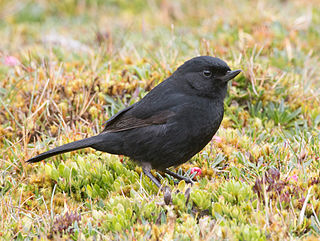
The black flowerpiercer is a species of bird in the family Thraupidae of the order Passeriformes. The family Thraupidae is known for tanagers and other very similar species of birds, but it is still facing classification issues. The black flowerpiercer is found in Colombia, Ecuador, Peru, and Venezuela.

The grey-headed tanager is a widely distributed species of small Neotropical bird in the tanager family Thraupidae. It is the only member of the genus Eucometis.
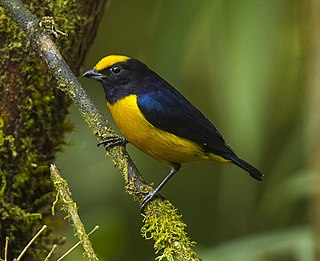
The orange-bellied euphonia is a species of bird in the finch family, Fringillidae. They were formerly considered tanagers (Thraupidae). It is found in Bolivia, Brazil, Colombia, Ecuador, Guyana, Panama, Peru, and Venezuela. Its natural habitats are subtropical or tropical moist lowland forest and subtropical or tropical moist montane forest.

The sooty ant tanager is a species of bird in the cardinal family (Cardinalidae); formerly, it was placed with the true tanagers in the family Thraupidae.

The Bahia antwren or pileated antwren is a species of bird in the family Thamnophilidae. It is endemic to Brazil.

The black-crested finch is a species of bird in the tanager family Thraupidae. It is found in Bolivia, Paraguay and northern Argentina. Its natural habitats are subtropical or tropical dry shrubland and subtropical or tropical high-altitude shrubland. It is a fairly common bird with a very wide range, and the International Union for Conservation of Nature has rated it to be a "least-concern species".
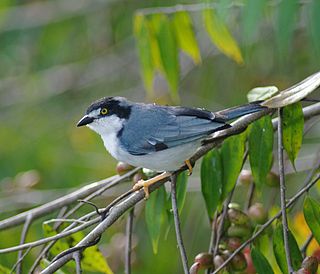
The hooded tanager is a species of bird in the tanager family Thraupidae. It is found in Argentina, Bolivia, Brazil, Colombia, French Guiana, Guyana, Paraguay, Peru, and Venezuela. Its natural habitats are subtropical or tropical moist lowland forest, subtropical or tropical mangrove forest, and heavily degraded former forest.

The black-and-rufous warbling finch is a species of bird in the tanager family Thraupidae.

The rosy thrush-tanager or rose-breasted thrush-tanager, is a species of bird in the currently monotypic genus Rhodinocichla. It was formerly assigned to the family Thraupidae and more recently viewed as being of uncertain placement; a 2015 molecular study places it closest to the Calcariidae. Found in Colombia, Costa Rica, Mexico, Panama, and Venezuela, its natural habitats are subtropical or tropical dry forests, subtropical or tropical moist lowland forests, and heavily degraded former forest.
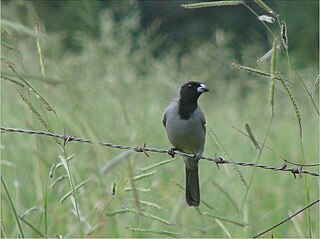
The black-faced tanager is a species of bird in the family Thraupidae.
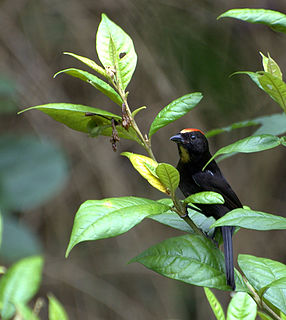
The flame-crested tanager is a species of bird in the family Thraupidae. It is found in Bolivia, Brazil, Colombia, Ecuador, French Guiana, Guyana, Peru, Suriname, and Venezuela. Its natural habitats are subtropical or tropical moist lowland forests and subtropical or tropical dry shrubland. Ten subspecies are currently recognized.

The black-headed tanager is a species of bird in the family Thraupidae. It is found in the northern highlands of South America . Its natural habitats are subtropical or tropical moist montane forests, subtropical or tropical high-altitude shrubland, and heavily degraded former forest.

The black-capped tanager is one of the many species of Neotropical bird in the family Thraupidae. It lives in mountains of Ecuador, Colombia and Venezuela year-round. This bird can often be found in open landscapes, alone or in pairs, hiding under branches of trees and bushes. Its natural habitats are subtropical or tropical moist montane forests and heavily degraded former forest.

The green-and-gold tanager is a species of bird in the family Thraupidae, the tanagers. It is one of 27 species in the genus Tangara.

The blue-and-yellow tanager is a species of bird in the tanager family Thraupidae.

The sooty grassquit is a small bird. It is recognized as a tanager closely related to Darwins finches.
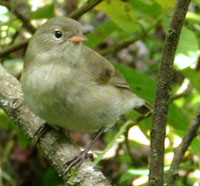
The green warbler-finch is a species of bird, one of Darwin's finches in the tanager family Thraupidae. Sometimes classified in the family Emberizidae, more recent studies have shown it to belong in the tanager family.






















